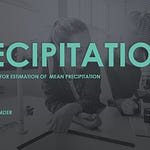(00:00:02):
Today we will discuss about the real reasons behind the impact of extreme events
(00:00:09):
that are becoming the new normals.
(00:00:15):
The impacts of extreme events like floods, waterlogging, landslides etc.
(00:00:22):
are now a regular phenomena all over the world.
(00:00:27):
Nowadays these events are considered as certain rather than uncertain.
(00:00:33):
Why?
(00:00:35):
The number of extreme events that has taken place in the last 10 years is far more
(00:00:48):
compared to that in the last 50 years.
(00:00:56):
So it's a clear sign that there is some abnormalities or some
(00:01:04):
vulnerabilities present in the climate of the recent times.
(00:01:16):
It is not only in India,
(00:01:19):
it is observed everywhere in the world,
(00:01:24):
be it Japan,
(00:01:25):
be it China,
(00:01:26):
be it Philippines,
(00:01:27):
be it America,
(00:01:28):
be it Europe,
(00:01:30):
be it in Australia, everywhere this type of extremities is observed.
(00:01:39):
And after an extreme climatic event like storm or heavy rainfall,
(00:01:47):
the result is more dangerous than the events itself.
(00:01:55):
For example,
(00:01:56):
after a cyclone or a hurricane or some extreme climatic events,
(00:02:07):
what follows is heavy rainfall,
(00:02:10):
heavy downpour.
(00:02:13):
So that result in flooding,
(00:02:17):
water logging of different areas,
(00:02:20):
landslides in hilly regions and which causes
(00:02:28):
lots of people to either lose their settlements or even some of them are killed in
(00:02:46):
this as the effect of these extremities.
(00:02:51):
So overall we can say the number of refugees
(00:02:58):
due to natural disasters are increasing steadily from the last 10 years.
(00:03:09):
The increase is very fast now,
(00:03:12):
increase in number is very very rapid now compared to the initial 5 years of the
(00:03:21):
last 10 years.
(00:03:26):
Take the example of some landslides,
(00:03:28):
30th July 2024 Kerala landslide in which more than 300 people get killed and many
(00:03:40):
more has been displaced from their homeland or where they had stayed from their
(00:03:52):
birth or from their childhood.
(00:03:56):
In case of Himachal Pradesh also, in 11th August 2024, massive landslides were observed.
(00:04:05):
Flooding is observed in Germany, Afghanistan, Oman, Uruguay, Argentina.
(00:04:14):
Cyclonic storms, these are not the effect.
(00:04:18):
Cyclonic storms are the cause.
(00:04:20):
Like Rimal, on May 25-27, it
(00:04:27):
It devastated Eastern India, East and North East India also.
(00:04:31):
Then comes Hamun, October, I think, actually it has come before Ramal.
(00:04:38):
Hamun, Hamun has occurred from October 23 to 25 in the year of 2023.
(00:04:42):
Before that, Bipotjoy, June 6 to 16.
(00:04:48):
Before that is Moka, 11 May to 14 May.
(00:04:58):
And as a result of cyclonic storm, all cyclonic storm is followed by a heavy rainfall, heavy downpour.
(00:05:07):
And for this downpour actually these floods take place,
(00:05:10):
flooding take place as well as waterlogging take place.
(00:05:15):
As for example is the Bengaluru waterlogging in 12th August 2024 after a heavy downpour.
(00:05:22):
Yes, that is not a byproduct of the cyclonic storms.
(00:05:29):
The downpour is so devastating that it created massive water logging all over the city of Bengaluru.
(00:05:38):
And in the same date, in Gurugram also, water logging has taken place.
(00:05:44):
And this list is unending.
(00:05:47):
But if we observe carefully, we can see in the last five years,
(00:05:54):
All these vulnerabilities or natural disasters are taking place in the month of June to October.
(00:06:05):
And you can confidently bookmark these three,
(00:06:09):
this June,
(00:06:10):
July,
(00:06:10):
August,
(00:06:11):
September,
(00:06:11):
October,
(00:06:12):
this four month where extreme events will take place.
(00:06:20):
So extreme events that are once considered
(00:06:24):
to be rarest of rare phenomenon which causes widespread disruptions are now
(00:06:32):
increasingly commonplace and regarded as normal apparatus,
(00:06:37):
at least during those four months.
(00:06:41):
Now my question is, what is the real cause of such events?
(00:06:49):
Whether it is the effect of El Nino or La Nina,
(00:06:56):
whether it is the impact of climate change,
(00:06:59):
the regular pattern of climate is changing,
(00:07:02):
or it is a result of rapid urbanization,
(00:07:06):
or is it a result of wide scale deforestation,
(00:07:10):
or is it a result of uncontrolled extraction of natural resources,
(00:07:16):
or you may also attribute it to the large scale conversion of land use.
(00:07:25):
The forest land is converted into agricultural land.
(00:07:29):
Agricultural land is converted into rural land.
(00:07:35):
Rural land is converted into urban land.
(00:07:39):
So what is the main cause?
(00:07:43):
So to explain the real cause or to point out or identify the real cause of these events,
(00:07:49):
you must understand that there is two aspects to this.
(00:07:55):
One is the effect.
(00:07:58):
Effects are what?
(00:07:58):
Flooding, water logging, landslides.
(00:08:04):
And what are the causes?
(00:08:09):
Heavy downpour, thunderstorms, cyclones, hurricanes.
(00:08:14):
Generally, all thunderstorms, all cyclones and hurricanes follows heavy downpour.
(00:08:24):
first the storm will take place, then heavy rainfall will occur.
(00:08:28):
Now the problem is when this heavy downpour takes place,
(00:08:35):
the flooding,
(00:08:37):
water logging,
(00:08:39):
all landslides take place also.
(00:08:46):
Now I will say why.
(00:08:48):
You know, the main culprit is
(00:08:52):
The drainage system of our watersheds.
(00:08:56):
By drainage network, I refer to the rivers, channels, canals, right?
(00:09:04):
The entire river network of the watersheds,
(00:09:08):
including the channels,
(00:09:09):
canals,
(00:09:10):
and the sewage network of the cities or of the rural areas also.
(00:09:18):
They are clogged.
(00:09:21):
They are blocked.
(00:09:24):
The water cannot flow through it smoothly.
(00:09:28):
Why?
(00:09:30):
Due to the decrease in depth from increased sedation.
(00:09:39):
Due to erosion, what happens is that eroded soil comes with the water and at the low
(00:09:51):
low flow of the river,
(00:09:52):
or what I can say,
(00:09:56):
not in the low flow,
(00:09:59):
from upstream to downstream,
(00:10:00):
near to downstream,
(00:10:02):
as there is a change in the velocity of flow,
(00:10:08):
those soil particles which are suspended and carried from upstream,
(00:10:14):
they are deposited due to this change in flow rate.
(00:10:18):
which decreases the depth of the channels canals river network all this and also
(00:10:24):
the sewage network now the main reason of the blockage of sewage network is not
(00:10:29):
only the suspended soil particles the main reason of blockage of sewage network is
(00:10:37):
all the organic and inorganic waste that is generated from industrial domestic as
(00:10:45):
well as
(00:10:47):
agricultural outputs or agricultural entities.
(00:10:54):
Industries release a lot of toxic waste into the river channels.
(00:11:00):
In that toxic waste or what which we say as wastewater,
(00:11:05):
lots of amount of inorganic waste is there like plastics,
(00:11:10):
then what I said,
(00:11:15):
plastic glasses,
(00:11:17):
plastic bottles,
(00:11:19):
and also there are clothings,
(00:11:22):
tissues,
(00:11:24):
and lots of things there,
(00:11:25):
ribbons,
(00:11:26):
lots of inorganic waste is there like this.
(00:11:30):
And from domestic,
(00:11:32):
there are lots of domestic waste released,
(00:11:35):
agricultural entities release fertilizers or pesticides,
(00:11:41):
mixed water into the river canals,
(00:11:44):
So all these actually add to the congestion of the sewage network or the irrigation
(00:11:52):
canals or irrigation channels.
(00:11:55):
Right?
(00:11:55):
So what I mean is,
(00:11:58):
if I make an analogy with the blood flow in our arteries or the blood vessels,
(00:12:05):
there also when fats are deposited,
(00:12:08):
when the fats build up in our arteries or blood vessels,
(00:12:12):
what happens?
(00:12:13):
The blood vessels become clogged and blocked.
(00:12:20):
It is implied that if you clog the artery, it will be blocked for any type of flow.
(00:12:25):
So the blood flow or the flow rate of blood become compromised.
(00:12:31):
It decreases.
(00:12:34):
As a result, what can happen?
(00:12:36):
As a result, blood can flow in the reverse order.
(00:12:43):
instead of flowing from up to down,
(00:12:45):
blood can flow down to up because he's not getting any path in the downstream.
(00:12:52):
So it may backflow, right?
(00:12:57):
And these backflow of blood is one of the major reason for heart or cerebral attack, if I am not wrong.
(00:13:08):
And sometimes also this due to this congestion in the blood channels,
(00:13:14):
what happens enough amount of blood does not reaches into our heart or into our
(00:13:20):
brain so that also causes cerebral or heart attack right and this congestion also
(00:13:28):
can cause ruptures in the blood vessel because you know if the blood cannot flow
(00:13:35):
through the vessel what it will try it will it will try to push its way through the
(00:13:41):
blood vessels
(00:13:43):
as a result if the amount of blood is very high then it can break the blood vessels
(00:13:51):
or damage the blood vessels right so this may also happen and another thing can
(00:13:57):
happen is blood spill as you got not allowing the blood to flow away what will
(00:14:03):
happen it will try to overflow so same as the flow of blood through the blood
(00:14:10):
vessels or arteries or
(00:14:13):
Same thing when water flows through a drainage network,
(00:14:16):
if you block that drainage or if you decrease the depth of that network or the flow path,
(00:14:26):
then what will happen when large amount of water comes into it,
(00:14:30):
comes into that drain,
(00:14:33):
it will either overflow or it will try to push through it through the network and
(00:14:38):
it may try to
(00:14:40):
As it is not getting its main path clear due to those blocking materials, what it will try to do?
(00:14:48):
It will try to create a lateral flow.
(00:14:51):
It will try to keep pressure into the walls of the candle,
(00:14:56):
right on the perimeter of the candle,
(00:14:58):
wetted perimeter.
(00:15:00):
And as a result, what happens?
(00:15:02):
It will damage the walls of the candle also.
(00:15:05):
Or it may cause, due to this excessive pressure, it may cause landslides.
(00:15:11):
if the canals are located into the hills.
(00:15:15):
And also, there is one other thing it can cause is, you know, it can backflow.
(00:15:24):
So this backflow means the water will start to flow in the reverse order.
(00:15:30):
And as a result, ultimately the water will come back to the source or come back to the location
(00:15:40):
from where it is released.
(00:15:42):
So ultimately it can cause waterlogging, right?
(00:15:47):
And when water overflows the canals due to the less depth than required, so that actually causes flood.
(00:16:03):
because if you are if you are flowing water through a channel and if you are
(00:16:07):
blocking its forward path forward flow path then what it will do it will try to
(00:16:13):
come laterally and as a result it will not get the lateral flow because there is
(00:16:19):
wall there wall of the candle is there so it will ultimately over spills into the
(00:16:24):
water into the watershed into the land area and it will ultimately causes the flood
(00:16:34):
So,
(00:16:35):
the problem is when extreme events like thunderstorms or cyclones or hurricanes
(00:16:40):
take place followed by heavy rainfall or simple heavy downpour is taking place,
(00:16:48):
the amount of water becomes very high.
(00:16:50):
But the path to carry out the water is not sufficient due to clogging or blocking
(00:16:55):
of the channel from waste products or for deposition of silt into the channel and
(00:17:03):
As a result, the depth has decreased.
(00:17:05):
So flooding or water logging or landslide take place.
(00:17:12):
Now to mitigate the frequency of occurrence of flooding,
(00:17:14):
waterlogging and landslide,
(00:17:16):
what we have to do is we need to desilt the drainage system and also we have to
(00:17:22):
expand the drainage network.
(00:17:25):
So the desilt will allow the excess water to flow through the existing network because it will get more
(00:17:32):
area to flow and this additional flow path,
(00:17:37):
if you increase the drainage network,
(00:17:40):
it will provide the additional path and as the water is also additional,
(00:17:45):
the water can easily flow through the additional path of the network.
(00:17:52):
Okay, now comes to the problem.
(00:17:56):
We all know, we may know or we all know that if we provide, if we desilt
(00:18:03):
or expand our drainage network, flooding, water logging can be avoided.
(00:18:08):
But the problem is our governments have turned blind to such proposals.
(00:18:16):
I don't know, but I think this is the main reason why we are not taking care of our drainage network.
(00:18:24):
We are neither desilting it, nor we are creating new networks.
(00:18:30):
The existing network is there.
(00:18:33):
If you take the example of Kolkata,
(00:18:36):
which is the metro city in East India,
(00:18:40):
the same British-era sewage network is still working.
(00:18:47):
After independence,
(00:18:48):
some minimum amount of network was added there,
(00:18:53):
but ultimately,
(00:18:55):
in the last 10 to 12 years,
(00:18:57):
there is no development.
(00:19:00):
There is no additional path for water to flow there.
(00:19:08):
There is no distillation work going on.
(00:19:13):
But number of people staying in Calcutta is increasing.
(00:19:17):
It is increasing at an exponential rate.
(00:19:20):
And they are releasing waste at exponential rate.
(00:19:25):
But there is no way
(00:19:27):
you can release that waste through the existing channel network.
(00:19:34):
So, what happens?
(00:19:35):
All are depositing in the channel network itself.
(00:19:38):
So, the depth is decreasing.
(00:19:40):
Water is not getting clear path to flow.
(00:19:43):
Now, what happened is water logging.
(00:19:46):
In city, you will face water logging.
(00:19:49):
In rural area, you can face flooding.
(00:19:53):
In hilly region, you will face flooding.
(00:19:56):
landslides.
(00:19:58):
So that is the case in Himachal Pradesh,
(00:20:02):
Kerala also,
(00:20:04):
in Venar,
(00:20:04):
where the landslide occurred on the 30th July 2024.
(00:20:10):
You know, in Kerala, Venar, it is first becoming one of the most popular tourist places.
(00:20:20):
And in an uncontrolled manner, in that Venar region,
(00:20:26):
They are making resorts.
(00:20:28):
They are increasing homestays.
(00:20:30):
They are deforesting.
(00:20:32):
And they are developing hotels and restaurants and all this.
(00:20:38):
Because there are number of tourists has increased manifold in the last five years at those areas.
(00:20:45):
But what is happening is you are not increasing the drainage network.
(00:20:50):
You are not desilting your river.
(00:20:52):
You are not desilting your irrigation channels and canals.
(00:20:57):
As a result, what is happening is that excess water is coming due to that downpour.
(00:21:02):
Heavy downpour takes place.
(00:21:05):
For one day, heavy rainfall has occurred in that Wehner area.
(00:21:10):
But what happened is there is no flow, sorry, no path for the excess water to flow.
(00:21:22):
And yes, existing network cannot withstand this excess water.
(00:21:28):
Because they are designed as per the extreme rainfall or the peak rainfall of the 100 years or 50 years.
(00:21:40):
But nowadays, this heavy rainfall is breaking all the records.
(00:21:48):
So those rainfall are more than 100 year return period.
(00:21:53):
200 year return period or more than that.
(00:21:58):
So they are extremely rare.
(00:21:59):
Earlier, we do not face such kind of rainfall, but nowadays it is common.
(00:22:07):
We are facing every other day during this month of June to September.
(00:22:13):
Okay?
(00:22:14):
Sorry, June to October.
(00:22:18):
So what the result of my discussion or very point,
(00:22:23):
very objective of my discussion was to appeal to the governments,
(00:22:27):
either state or central,
(00:22:30):
to immediately take measures to desilt the river irrigation channels,
(00:22:39):
sewage network that are available in all the cities of India.
(00:22:46):
or any other parts of the world.
(00:22:50):
And also not only desilitation, but you have to add drainage network to your existing drainage network.
(00:22:59):
Because the rainfall for which the existing drainage network is designed, this is now overtaken.
(00:23:09):
Now this overtaking of peak rainfall of the last 100 years, yes, this can be attributed
(00:23:17):
to either El Nino or La Nina effect or impact of climate change or rapid
(00:23:24):
urbanization or deforestation or uncontrolled extraction of natural resources.
(00:23:30):
Okay.
(00:23:31):
But there is a solution.
(00:23:34):
You have to use some fund, right?
(00:23:37):
And you have to use that fund to develop our drainage system or drainage network.
(00:23:44):
So bye for now.
(00:23:46):
And let us see what happened.
(00:23:48):
Kindly comment with your opinion regarding this situation.
(00:23:52):
Thank you and see you next time.
Transcript generated by Substack.
Keep this article accessible even after seven days by becoming a Paid Member.
Please Note: To continue accessing this article after seven days, please upgrade to a personal membership. If you want to promote your products continuously in The HydroGeek Newsletter feeds to subscribers, send an email twice to all of them, share on our social media, be featured on the home page, and be included in selected email bulletins reaching multiple water professionals then kindly upgrade yourself to an Institute Membership (if you want to pay in INR then send the requisite amount to 9830887194@ybl)
If you want to chat with me regarding this membership or any problem with the payment process, you can do so by using the button below :
Once again, I would like to extend my sincere appreciation for your ongoing support of the newsletter. Your involvement is greatly valued and plays a vital role in the sustenance of this publication.
Thanks,
Founding and Honorary Editor
All the commissions will be deposited to NGOs and NPOs after the deduction of the honorariums, maintenance, and taxes for running this site. HydroGeek is not responsible for any damage/loss caused by the information shared here. The newsletter has acknowledged the source from where the information is collected as much and as accurately as possible. If anyone still notes any violations kindly contact us at our email : hydrogeek. at. substack .com
Follow me on Gumroad / Twitter / Youtube
HydroGeek is a reader-supported publication. To support my work, consider becoming a paid subscriber or gift a subscription to someone you know will be interested in this newsletter.
Thanks for reading the entire article. Protect your PC with BitDefender(Adv)
Random Ads / Chocolates / Babyproducts












